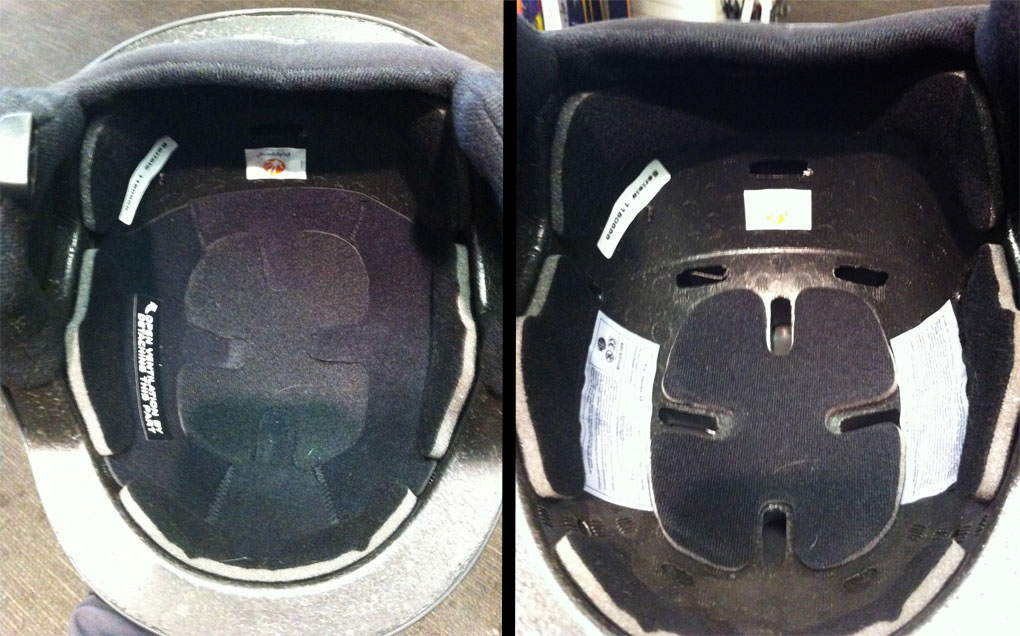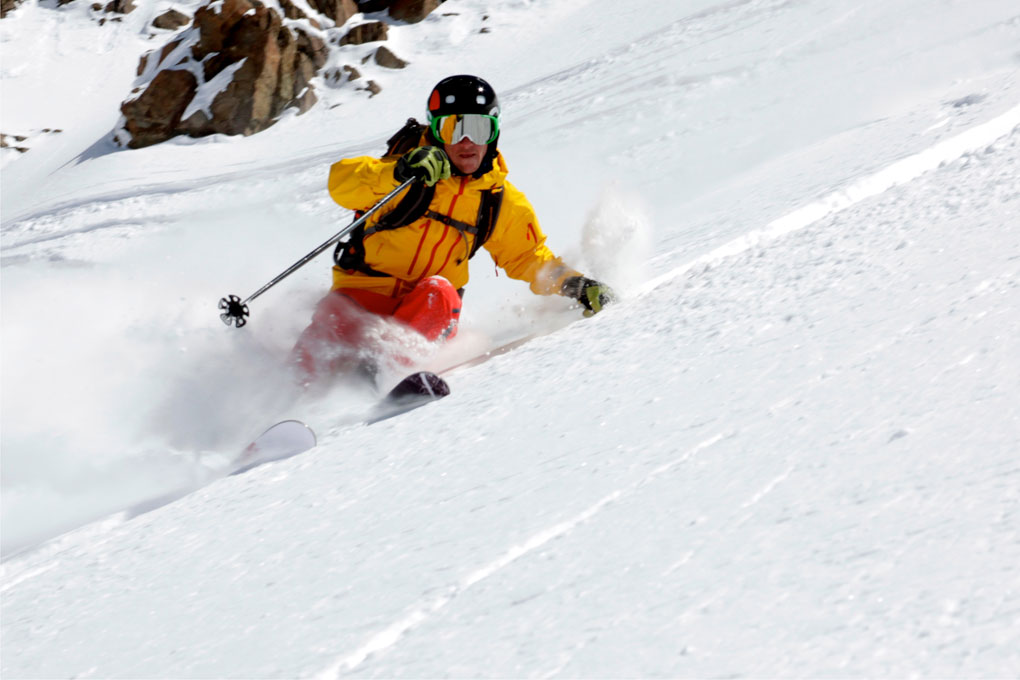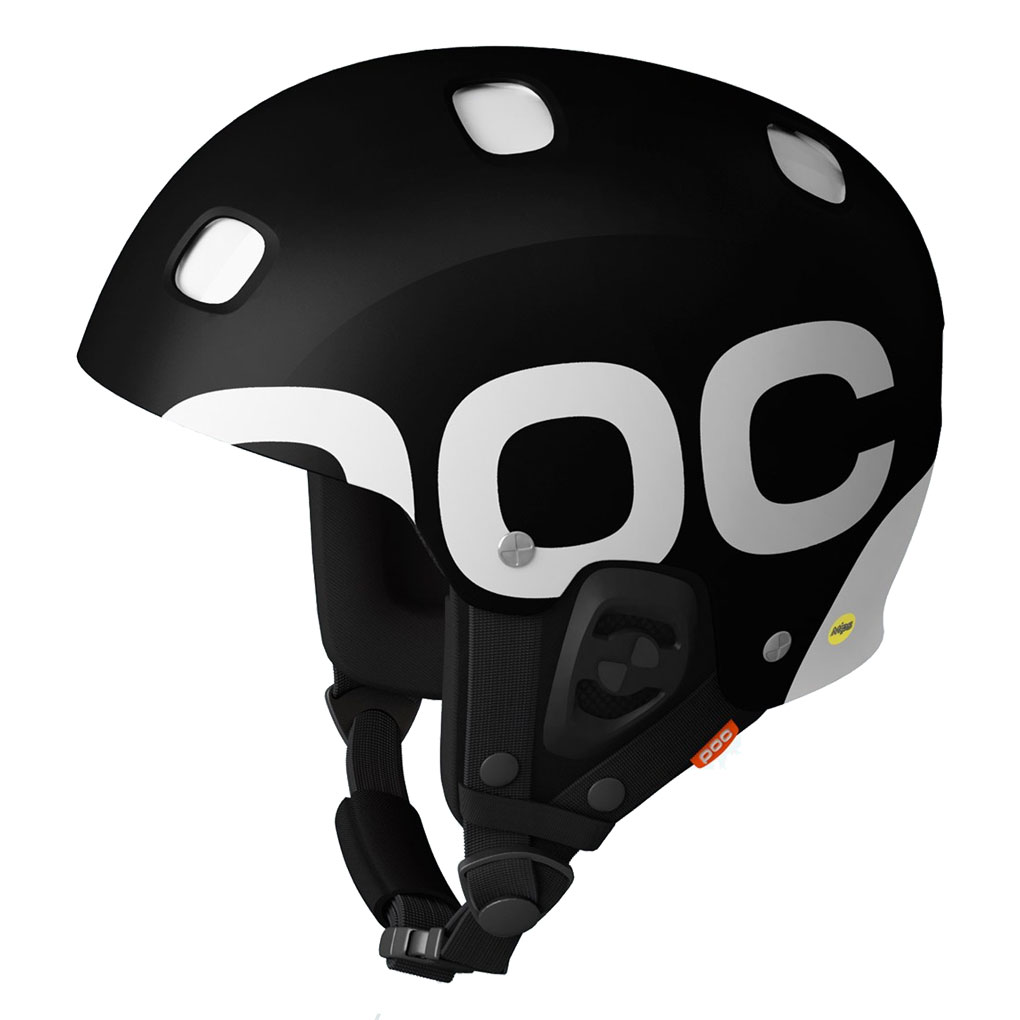Size: Medium (55-56cm)
Weight: 640 g
Features:
- MIPS multi-shell technology
- Aramid Penetration Barrier
- Multi Impact EPP foam
- Detachable ear and neck roll
- Headphone option
Days Worn: 70
Test Locations: Las Leñas, Jackson Hole Mountain Resort
MSRP: $250
For the Receptor Backcountry helmet, POC has taken their “Receptor+” helmet and added additional safety features, namely MIPS, a multi-shell technology that is designed to allow the helmet to better absorb rotational forces in high-speed crashes.
While I didn’t set out to test this technology, I had a few unintended opportunities over the past several months to see how it works. But first, the non-crash info.
Fit
My head measures 54cm, but I ended up wearing the Medium in the Receptor Backcountry, which POC lists in their size guide as fitting heads from 55-56cm. (I also wear a Medium in the Smith Vantage, which is listed as 55-59cm.) I tried the Small (53-54cm), but couldn’t bear how tight it felt.
When I first put on the Medium Receptor Backcountry, my initial reaction was that the padding was still a little tight around the temples. After about two weeks of wearing the helmet, however, the pads packed out a bit and the tightness was gone. Now, after about 70 days, both the pad over the forehead and the pads over the temples have packed out to about half their original thickness, though they’re still thick enough that the helmet is not slopping around. The pads are continuing to pack out, but the helmet comes with extra pads to replace the originals when necessary.
I have zero complaints about the comfort of the Receptor Backcountry when I am wearing it, but l think the way the Boa Fit System of the Smith Vantage snugs up the padding to the back of my head gives me the perception of it being more comfortable when trying on the two helmets back to back. Also, now that the pads have packed out a bit, the Receptor Backcountry feels more “ovular” than the Vantage—longer front to back and narrower side to side. It’s also a little heavier than the Vantage: 640 grams to the Vantage’s 440.
Venting
The venting system on the Receptor Backcountry works by directing air from outside the helmet through a series of indirect channels to your head: Eight gaps on the exterior of the helmet are indirectly connected to 14 slots in the interior foam. This indirect venting helps reduce wind penetration, and I’m comfortable about 95% of the time leaving the vents open. Only when temps are in the single digits Fahrenheit and I’m skiing fast do I get some brain freeze.
A single, removable plug serves to close the vents by blocking the 14 interior slots. This of course means taking the helmet on or off to open or close the vents. The plug itself is small enough to be folded up and stuffed into a pocket, which also means that it’s fairly easy to lose. But, as I mentioned, rarely do I find that inconvenient.

On warmer days, the soft ear pads and neck roll can also be removed to dump more heat.
Goggle Clip
The goggle clip is positioned fairly low on the back of the helmet—low enough that, in my experience, the angle of the goggle strap pulled the back of the helmet down even farther, which in turn gave me some unacceptable gaper gap. But the clip is removable, so taking it off made this a non-issue, especially with silicone-lined goggle straps. Even when I wore my older backup goggles that aren’t silicon lined, they stayed put while I was skiing, though resting them up on the helmet was a delicate balancing act.
Goggle Compatibility / Style
I would typically approach helmet-to-goggle compatibility from the goggle side, but it is worth noting that the Receptor Backcountry pairs well with several pairs of goggles I have been wearing. The POC Corneas are the obvious match, and, as I mentioned in my Cornea review, they offer seamless integration, as expected.

The Smith Phenom also nestles well against the front brim. Smaller goggles, however, including the Phenom, do in fact look small when nestled under the thick front lip of the helmet.
The Receptor Backcountry is available in the three colors: glossy black, white, and orange, none of which is my first choice for helmets. But I am willing to be flexible when it comes to colors if it means I will be less concussed the next time I head-butt a tree.

